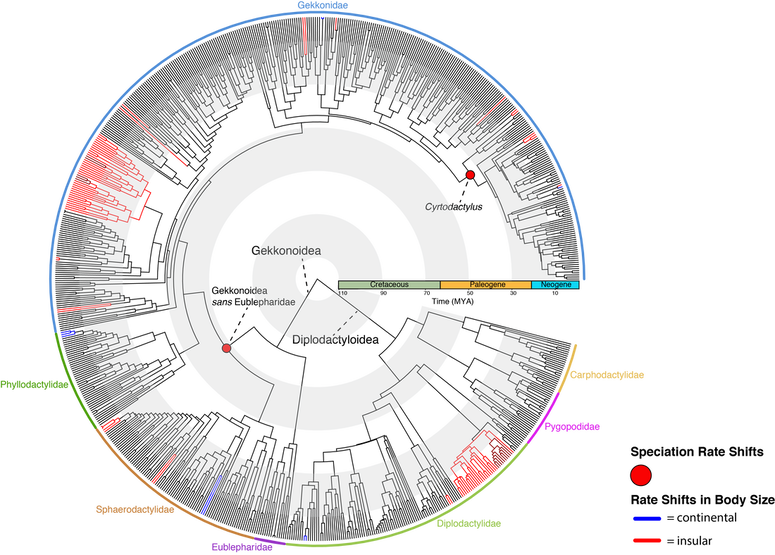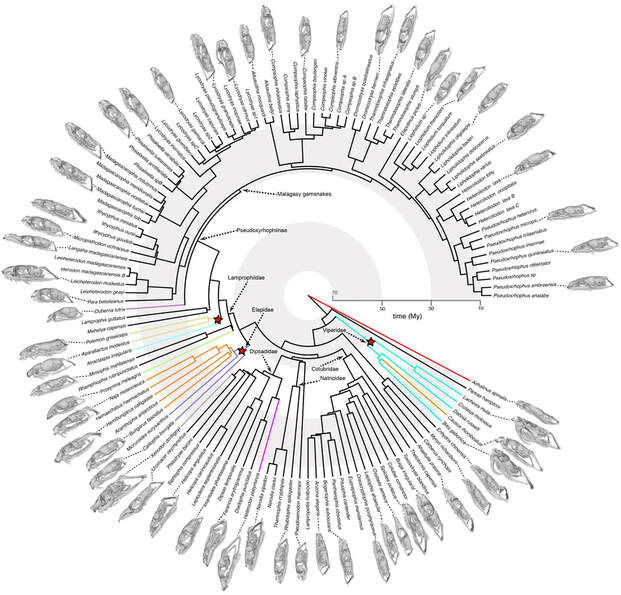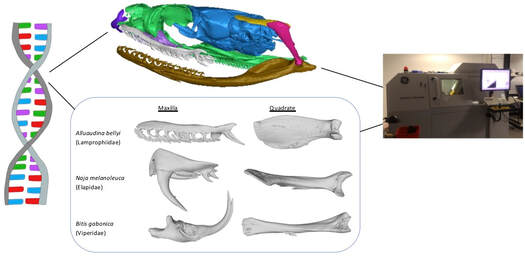Speciation, Phenotypic Diversification, and Biogeography

Species richness across the tree of life is highly asymmetrical and several hypotheses have been invoked to explain this pattern. Using established statistical methods, I am using squamate reptiles as a case study to determine how clades diversify in novel habitats both in terms of speciation rate and rates of phenotypic divergence. Squamates rival birds as the most speciose clade of tetrapod and vastly exceed other amniotes in morphological diversity. Using a combination of traditional phylogenetics, phylogenomics, morphology, and comparative phylogenetics, I aim to address the processes driving macroevolutionary dynamics in this clade.
Selection, Adaptive Radiations, and Convergence

Adaptive radiations are ascribed widely across the tree of life, but few clades have been examined in detail to determine if they follow the theoretical expectations of this phenomenon. My lab will test how novel traits evolve in squamate adaptive radiations and how these clades traverse adaptive landscapes. Similarly, unrelated taxa can acquire similar phenotypes due to similar selective pressures leading to the phenomenon of convergence. This has been well established in Anolis, numerous squamate lineages offer additional opportunities to investigate the prevalence of this pattern.
Genomics and Trait Evolution

The lab will be taking new direction to complement the established arenas of phylogenomics and comparative phylogenetics. We aim to sequence whole genomes across the squamate phylogeny to address the genomic underpinning of specific morphological traits. These data further provide insight into the tempo of molecular evolution in comparison for known phenotypic correlates.

